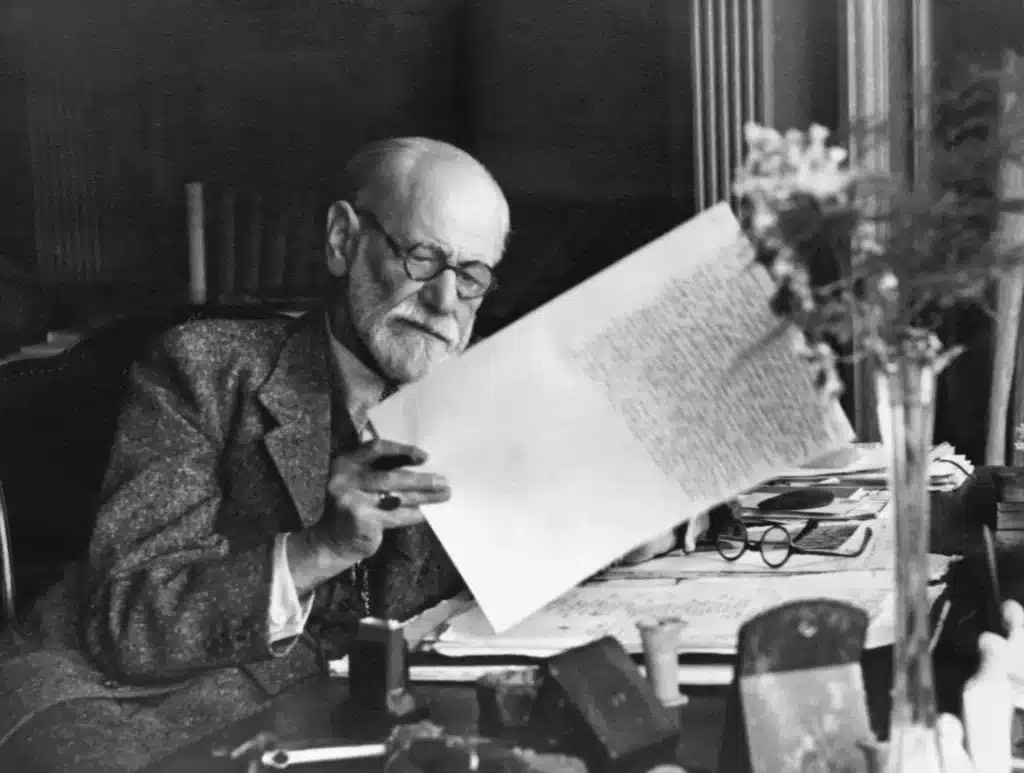The length of psychoanalysis depends on each person’s needs and goals. When people ask how long traditional psychoanalysis typically takes, most treatments last between three and seven years, with several sessions each week.
This time helps people explore unconscious thoughts and emotions that shape their behavior. Because psychoanalysis focuses on lasting change, progress happens slowly through open conversation and reflection.
Psychoanalysis is a long-term psychoanalytic therapy that helps people understand their emotions and internal conflicts. Anat Joseph, LCSW, PsyA, utilizes this theory to help clients identify patterns that impact their relationships and mental health.
Her work shows how the method, created by Sigmund Freud, can help people with depression, anxiety, and other mental health conditions gain lasting insight and emotional balance.
Key Takeaways
- Traditional psychoanalysis often lasts three to seven years with several sessions per week.
- Progress happens slowly as clients uncover unconscious conflicts and build emotional awareness.
- It is based on psychoanalytic theory, which studies the id, ego, and superego using free association and dream analysis.
- Modern forms, such as relational psychoanalysis, emphasize the bond between therapist and client for sustained emotional growth.
- The goal of psychoanalysis is long-term self-awareness, stability, and inner peace.
Typical Duration and Process
Psychoanalysis takes time because it works with deep emotional patterns instead of short-term symptoms. Classical psychoanalysis can involve several sessions per week, but many analysts now offer two to three sessions per week depending on the person’s goals, resources, and history. Treatment often lasts two to five years, with some clients choosing longer work when they want to explore long-standing patterns.
A person working through chronic anxiety or relationship challenges may spend several years in treatment to understand and resolve unconscious conflicts.
This steady process helps you explore hidden thoughts and emotions and link past experiences with current reactions to support lasting personal change.
What to Expect During a Psychoanalysis Session
Sessions are held in a quiet, private space. Clients can sit or lie down and are encouraged to share their thoughts and feelings openly. Each session lasts around 45 to 50 minutes. Over time, this helps people uncover deeper emotions and develop insight through unconscious processing.

How Long Does Psychoanalysis Typically Take
There is no set length for treatment. Some clients experience progress within a few months, while others require several years.
Why Psychoanalysis Takes So Long
Psychoanalysis focuses on long-term healing, not quick fixes. The unconscious mind holds internal conflicts and hidden memories that take time to surface. Real change occurs as trust develops between the client and therapist, allowing emotions to unfold naturally.
How Long Does It Take to Psychoanalyze Someone
The first few sessions focus on understanding the client’s history, behavior, and unconscious conflicts. This helps the therapist create a plan that aligns with the client’s needs and readiness for more intensive work.
Typical Number of Sessions per Week
Most people meet two to three times per week for sessions lasting about 50 minutes. Regular sessions help maintain consistent emotional progress and facilitate the clearer uncovering of unconscious thoughts.
Who Can Benefit From Psychoanalysis
Psychoanalysis helps people struggling with anxiety, depression, and emotional patterns that repeat over time. It can also support those dealing with obsessive thoughts through psychoanalysis for OCD.
It is ideal for individuals who are ready to explore their inner world and grow over time. Those who prefer remote options can join online psychoanalysis sessions with a licensed therapist.

How Psychoanalysis Works and Progresses
In early sessions, clients practice free association, speaking freely without judgment. This helps uncover unconscious thoughts that influence behavior. Over time, clients come to understand how early experiences shape their current emotions and relationships.
Brief Overview of Psychoanalytic Theory
Freud’s psychoanalytic theory explains that behavior comes from the unconscious mind. He described three parts: the id (instincts), the ego (rational thought), and the superego (moral values). Understanding these parts helps clients resolve internal conflicts and emotional pain.
Dream analysis is another tool. Dreams show symbols and wishes from the unconscious mind. By exploring them, clients connect their dreams with real emotions and enhance their self-understanding.

How Long Does Psychoanalysis Take to Work
Some clients notice emotional growth within a year, while others need more time. Results depend on the issues being treated, the person’s openness, and the consistency of the sessions. Regular attendance helps turn emotional awareness into lasting change.
How to Know if Psychoanalysis Is Working
Progress can manifest as improved emotional balance, clearer communication, and stronger relationships. Small signs, such as expressing emotions more easily, often indicate that deep healing is taking place.
Emotional Milestones in Psychoanalysis
As therapy progresses, clients typically feel calmer, more confident, and more accepting of themselves. They react less defensively and handle challenges with greater ease. These gradual milestones mark steady emotional progress.
Factors That Influence Progress
Progress in psychoanalytic therapy depends on:
- The type of mental health conditions being treated
- The client’s openness and trust
- Regular attendance
- The willingness to face painful unconscious conflicts
Anat Joseph teaches that psychoanalysis takes patience. It focuses on steady, lasting change that builds emotional strength and awareness.
Different Forms of Psychoanalysis
Freud’s original ideas have evolved into new approaches. Relational psychoanalysis focuses on how early relationships influence current emotions. It helps clients see how the therapist-client bond can repair old emotional patterns.
Freud’s Legacy and Modern Adaptations
Freud believed that childhood experiences and repressed emotions shape personality. His techniques, such as free association and dream interpretation, remain in use today. Modern psychoanalysis adds a focus on collaboration and emotional connection. Learn more about modern psychoanalysis and how it updates Freud’s work for today’s clients.
How Long Does Relational Psychoanalysis Take
Relational psychoanalysis may require fewer sessions per week but can still last for years. It focuses on improving relationships while exploring unconscious processing and emotional habits.
Traditional vs. Modern Psychoanalysis
Traditional psychoanalysis looks deeply into repressed memories and unconscious conflicts. Modern methods balance past exploration with current feelings and experiences. Both approaches help people reach emotional insight and personal growth.
Comparing Psychoanalysis With Other Therapies
Psychoanalysis differs from cognitive behavioral therapy (CBT), which focuses on current thoughts and behaviors. Psychoanalysis focuses on unconscious conflicts and deeper emotional causes.
To see how behavior therapy differs from psychoanalysis, remember that CBT changes behavior, while psychoanalysis helps people understand their emotions.
What Is the Emphasis in Humanistic Therapy
Humanistic therapy emphasizes personal growth and acceptance in the present moment. It does not explore unconscious thoughts as deeply as psychoanalysis. It works best for short- or medium-term emotional support.
Psychoanalysis vs. Humanistic Therapy – Key Differences
Approximate Timeline of Treatment
Each client’s experience is different, but most psychoanalysis follows this timeline:
- First 6 months: Build trust and uncover unconscious conflicts.
- 1–2 years: Explore emotional struggles and relationships.
- 3–5 years: Apply insights to daily life.
- 5+ years: Strengthen stability and self-understanding.
This process helps people gain awareness and long-term growth.
Expected Outcomes and Goals
The main goal of psychoanalysis is to bring unconscious thoughts into awareness and reduce emotional tension. Clients often find it easier to express their thoughts, feelings, and experience less depression, anxiety, and stress.
Over time, psychoanalysis helps individuals resolve internal conflicts, gain a deeper understanding of themselves, and foster stronger relationships. It supports balance, confidence, and better overall mental health.
Is Long-Term Psychoanalysis Right for You
Psychoanalysis is ideal for those seeking deep emotional insight, rather than quick fixes. It helps people face long-term struggles and complex emotions linked to mental health conditions.
Anat Joseph, LCSW, PsyA, helps clients decide if psychoanalytic therapy is the right path. Her experience and guidance help clients reach emotional awareness and lasting healing.
If you’re ready to begin your journey toward self-understanding and emotional growth, consider scheduling an appointment to explore how psychoanalysis can help you achieve lasting change.

